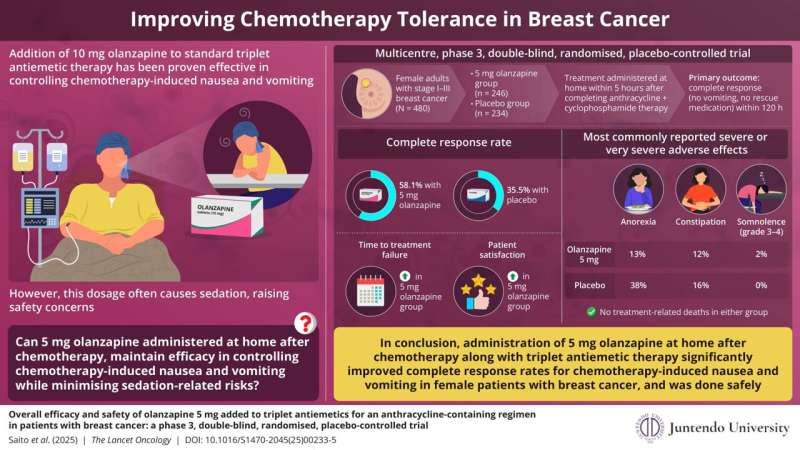Hey there! If you're reading this, chances are you or someone you care about is dealing with nausea and vomiting, and your doctor has prescribed ondansetron. Maybe it's for chemotherapy, post-surgery recovery, or morning sickness. Whatever the reason, you're probably wondering what to expect when taking this medication.
Let's be honest starting a new medication can feel a bit like stepping into the unknown. You want relief from those awful symptoms, but you're also curious about what ondansetron side effects might come along for the ride. That's completely understandable, and I'm here to walk through this with you in a way that feels like having a conversation with a trusted friend.
Understanding How Ondansetron Works
First things first how does ondansetron actually work its magic? Think of it like this: your body has these little chemical messengers called serotonin that can trigger nausea and vomiting when they bind to certain receptors in your brain and gut. Ondansetron is what we call a 5-HT3 receptor antagonist, which is just a fancy way of saying it blocks those serotonin signals from causing you to feel sick according to research.
It's pretty clever when you think about it instead of just masking symptoms, it actually goes after the root cause of why you're feeling queasy in the first place. This is why it's so effective for ondansetron nausea treatment and ondansetron vomiting relief. But here's the thing because it's working with your body's chemistry, there can be some unintended consequences. That's where side effects come into play.
Common Mild Side Effects You Might Experience
Let's start with the good news most people don't experience anything too dramatic when taking ondansetron. The ondansetron side effects that do occur are usually pretty mild and tend to fade as your body adjusts to the medication.
Some of the most commonly reported ones include:
Headaches These can feel like tension headaches and often improve with time. I've heard from many people who say a little rest and staying hydrated helps quite a bit.
Drowsiness and fatigue If you're already feeling run down from illness or treatment, this can compound that tired feeling. The good news? Many people find this fades after the first few days. One study found that when people took their doses with food, drowsiness decreased significantly by day three.
Dizziness This can be more noticeable when you stand up quickly. It's like your body needs a moment to adjust to position changes. Moving slowly and staying well-hydrated usually helps.
Digestive changes Some people experience constipation, while others might have diarrhea. It's your body adjusting to the medication's effects on your digestive system. Adding fiber to your diet and staying active can often help with constipation.
Dry mouth and itchy skin These are less common but still worth noting. Sipping water throughout the day and using gentle, fragrance-free moisturizers can provide relief.
Here's something that might surprise you some people actually report feeling a bit anxious or restless, especially when first starting the medication. It's like your body is readjusting to the new normal. This usually settles down within a few days.
When to Be Concerned: Serious Side Effects
While most ondansetron side effects are mild, there are some rare but serious reactions that require immediate attention. I know this might sound scary, but being informed means you're empowered to take care of yourself.
Serotonin syndrome is one to watch for. This happens when there's too much serotonin activity in your body. Symptoms include agitation, rapid heartbeat, high blood pressure, dilated pupils, muscle rigidity, and in severe cases, seizures. If you experience these symptoms, especially if you're taking other medications that affect serotonin levels, contact your healthcare provider immediately.
Heart rhythm changes Some people might develop what's called QT prolongation, which affects the heart's electrical activity. You might feel lightheaded, faint, or notice your heart beating irregularly. This is more common in people who already have heart conditions or take other medications that affect heart rhythm according to medical literature.
Severe allergic reactions While rare, these can include rash, itching, swelling (especially of the face, tongue, or throat), severe dizziness, and trouble breathing. If you experience any of these, seek emergency medical attention.
Intestinal blockage concerns Because ondansetron can slow down gut movement, there's a small risk of severe constipation leading to bowel obstruction. If you experience severe abdominal pain, bloating, or inability to pass gas or have a bowel movement, contact your doctor right away.
Comparing Different Forms and Dosages
You might be surprised to learn that ondansetron comes in several different forms tablets, orally disintegrating tablets (ODT), liquid solutions, and injections. Each has its own characteristics and potential side effect profile.
The standard oral tablets are what most people are familiar with. The ondansetron dosage guide typically recommends starting with 4-8 mg for most adults, but this can vary based on your specific situation. For chemotherapy-induced nausea, you might take 8 mg twice daily, starting 30 minutes before treatment as indicated in FDA guidelines.
The orally disintegrating tablets (ODT) are convenient because they dissolve quickly in your mouth without water. However, there have been some reports of breathing difficulties in surgical patients using this form, so it's something your medical team will consider.
Liquid formulations are helpful for those who have trouble swallowing pills, and injections are typically reserved for hospital settings when oral medications aren't practical.
Regarding dosages higher isn't always better. There's no clear evidence that higher doses automatically mean worse side effects, but there is a higher risk of complications when multiple medications interact or when doses are taken too close together.
Managing Side Effects Like a Pro
Here's where the real practical magic happens knowing how to manage those manage ondansetron side effects so they don't derail your recovery.
Timing matters Taking ondansetron with or right after meals can help reduce stomach upset and may minimize drowsiness for some people. If you're taking the oral disintegrating tablet, make sure to remove it from the blister pack properly don't push it through the foil backing as this can damage the medication.
For headaches Simple measures like staying hydrated, getting adequate rest, and taking acetaminophen (if approved by your doctor) can help.
Dealing with drowsiness If fatigue is an issue, try taking your dose at bedtime when possible. This way, any drowsiness works with your natural sleep cycle rather than against it.
| Symptom | Self-Care Approach | When to Contact Doctor |
|---|---|---|
| Mild headache | Rest, hydration, Tylenol if approved | Headache worsens or doesn't improve |
| Persistent constipation | Increase fiber, stay active, drink water | No bowel movement in 3+ days |
| Mild dizziness | Move slowly when standing | Dizziness with fainting |
| Anxiety/restlessness | Deep breathing exercises | Severe agitation or confusion |
Setting reminders for your doses can help prevent missed doses or accidental double-dosing, both of which can affect how you feel.
Special Considerations and Precautions
Some people need to be extra careful with ondansetron. If you have a history of heart rhythm problems, particularly Long QT Syndrome, it's crucial that your doctor knows this. They may want to monitor you more closely or consider alternative treatments.
Low levels of potassium or magnesium in your blood can increase the risk of heart rhythm problems when taking ondansetron. Your doctor might check these levels periodically, especially if you're receiving the medication for chemotherapy or other extended treatments.
If you have a history of bowel obstruction or severe constipation, make sure your healthcare provider is aware. They'll want to monitor you closely and may recommend additional measures to keep things moving smoothly.
Pregnancy and breastfeeding require special consideration. While ondansetron is categorized as a Pregnancy Category B drug (meaning studies haven't shown risk to the fetus), it's always best to discuss the benefits and risks with your healthcare provider. Small amounts do pass into breast milk, so nursing mothers should consult with their pediatrician.
Medication Interactions to Watch For
Here's something that can trip people up ondansetron can interact with other medications. One of the most serious interactions is with apomorphine, which can cause dangerous drops in blood pressure and loss of consciousness. This combination should be avoided entirely.
If you're taking antidepressants like SSRIs or SNRIs, there's a small risk of serotonin syndrome, so your doctor will want to monitor you closely. The same goes for other medications that affect heart rhythm the combination can potentially lead to serious cardiac events.
This is why it's so important to keep an updated list of all your medications, including over-the-counter drugs and supplements, and share this with any healthcare provider who prescribes new medications for you.
Making the Most of Your Treatment
Understanding ondansetron side effects isn't about creating fear it's about empowerment. When you know what to expect and how to handle it, you can focus on feeling better rather than worrying about what might happen.
Most people find that the relief from nausea and vomiting far outweighs any minor side effects. Think of ondansetron as your ally in the journey back to feeling like yourself again. The temporary discomfort of minor side effects is often a small price to pay for being able to keep food down, maintain your strength, and continue with your treatment plan.
Remember, you're not alone in this. Millions of people take ondansetron each year, and most have positive experiences. Your healthcare team is there to support you through any challenges that arise. Don't hesitate to reach out if something doesn't feel right it's always better to ask questions than to suffer in silence.
Keep track of how you're feeling, both in terms of symptom relief and any side effects. This information is valuable when discussing your treatment with your healthcare provider. You might even want to keep a simple journal noting when you take doses, how you feel, and any observations about what helps or hinders your comfort.
Wrapping Up: Your Journey Forward
As we wrap up this conversation, I want you to walk away feeling informed, prepared, and confident about your ondansetron treatment. Yes, there can be ondansetron side effects, but most are mild and manageable. The relief this medication provides for nausea and vomiting can be life-changing for many people going through chemotherapy, recovering from surgery, or dealing with other conditions.
Whether you're taking ondansetron for a short course or as part of a longer treatment plan, remember that your comfort and safety are the top priorities. Pay attention to how your body responds, don't hesitate to ask questions, and trust your instincts about when something needs attention.
The path to feeling better isn't always smooth, but with the right information and support, you're well-equipped to navigate it successfully. Here's to fewer queasy moments and more good days ahead!
What matters most is that you feel heard, supported, and confident in your treatment journey. If you have any concerns or questions as you start taking ondansetron, don't hesitate to reach out to your healthcare team. They're there to help you feel your best, and that includes managing any side effects that might come up along the way.
FAQs
What are the most common side effects of ondansetron?
The most common side effects include headaches, drowsiness, dizziness, constipation, diarrhea, and dry mouth. These are typically mild and improve as your body adjusts to the medication.
Can ondansetron cause serious side effects?
While rare, serious side effects can include serotonin syndrome, heart rhythm changes (like QT prolongation), severe allergic reactions, and bowel obstruction due to severe constipation. Contact your doctor immediately if you experience any severe symptoms.
How can I reduce ondansetron side effects?
Taking ondansetron with food may help reduce drowsiness and stomach upset. Staying hydrated, moving slowly when standing, and using self-care strategies like rest or fiber for constipation can also help manage side effects.
Is ondansetron safe during pregnancy or breastfeeding?
Ondansetron is categorized as Pregnancy Category B, but it does pass into breast milk. If you're pregnant or nursing, consult with your doctor to weigh the benefits and risks before using this medication.
What medications interact with ondansetron?
Ondansetron can interact with drugs like apomorphine, SSRIs, SNRIs, and other medications affecting heart rhythm or serotonin levels. Always inform your doctor about all medications you are taking to avoid harmful interactions.
Disclaimer: This article is for informational purposes only and does not constitute medical advice. Always consult with a healthcare professional before starting any new treatment regimen.
Related Coverage
Today's porn saturation has normalized monotonous, male-centric sex routines. Women report predictability and laziness leaving them turned off and nauseated....
Find effective chemo-induced nausea relief with low-dose olanzapine, diet tips, and safe strategies to stay strong during treatment....
Find out the correct ondansetron dosage for adults and kids, timing, forms, and safety tips to relieve nausea quickly and safely....
When you feel sick to your stomach, use creative euphemisms like “tossing cookies” or “driving the porcelain bus” instead of saying “throwing up.” More polite and funny synonyms for vomiting....
Nighttime nausea has many potential causes including GERD, pregnancy, migraines, gastroparesis, anxiety, and medication side effects. Tips to relieve and prevent nausea....
Learn about ondansetron side effects, how to manage them, and what to expect during treatment for nausea and vomiting....
Do you feel nauseated at night as a female? Discover common causes like hormones, acid reflux, stress, food sensitivities. Get tips to prevent and treat nausea....
Nausea is a common side effect of fasting. Drink water, use acupressure, take supplements like ginger, and relax to ease symptoms. See a doctor if nausea is severe....
Nausea involves feeling like you may vomit. Pregnancy, infections, medications, digestive issues and motion sickness are common causes. Treatments include medications, lifestyle changes and addressing underlying conditions....
Queasiness describes an unsettled stomach sensation related to early nausea without necessarily vomiting. Causes include medication, motion sickness, stress, food triggers....







